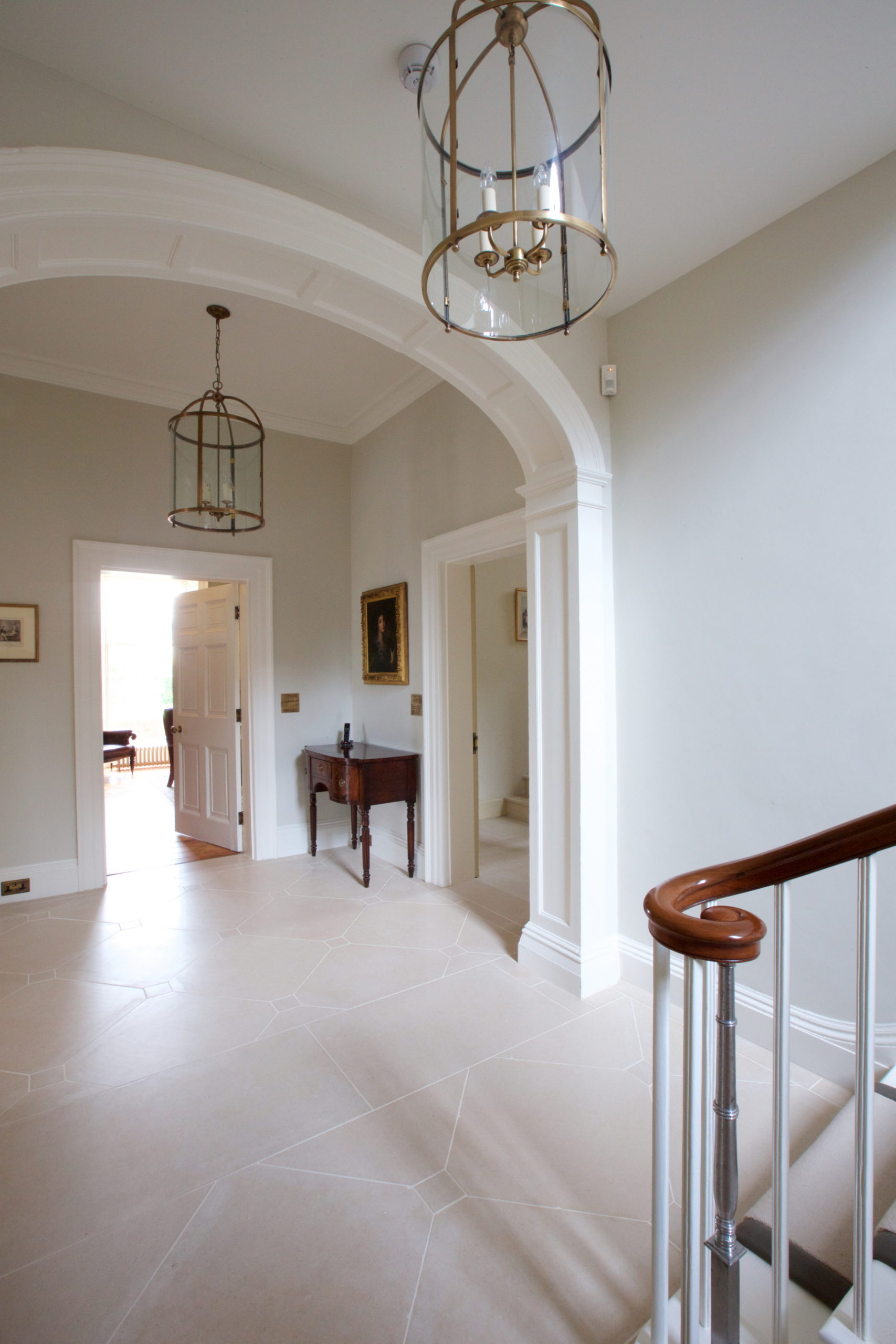
18 Feb Stone Flooring in Georgian houses
Georgian Limestone floors: To Replace or to Emulate?

Artorius Faber/Etons of Bath floor – Georgian Rectory hallway
When it comes to Georgian stone flooring in houses we renovate for clients, such as tumbled limestone, we are always in favour of cleaning up the original or finding the best possible match when specifying new.
Often with Georgian properties, listing regulations make the option to replace existing stone not only frowned upon but sometimes impossible. Thankfully, there are amazing options available on the market to match these incredible floors and stay within the listed guidelines for many Georgian properties.
Georgian homes in Bath and Bristol, for example, often feature the most divine locally quarried Bath stone floors. There are a number of techniques Etons of Bath use to bring these floors back to their original glory. However, we also love the imperfections of natural stone and never try to ‘iron’ these out during restoration lest we take some of the Georgian character away from the spaces. These dents and chips signify years of history, which we love.
Stone like Bath and Portland are a wonderful pale tone which works well when contrasted with darker tones like brown furniture or antique rugs. In Georgian properties, we aim to unify the walls with the stone floor by keeping them pale in hue. This allows the architectural features such as the mouldings and staircases to take centre stage.
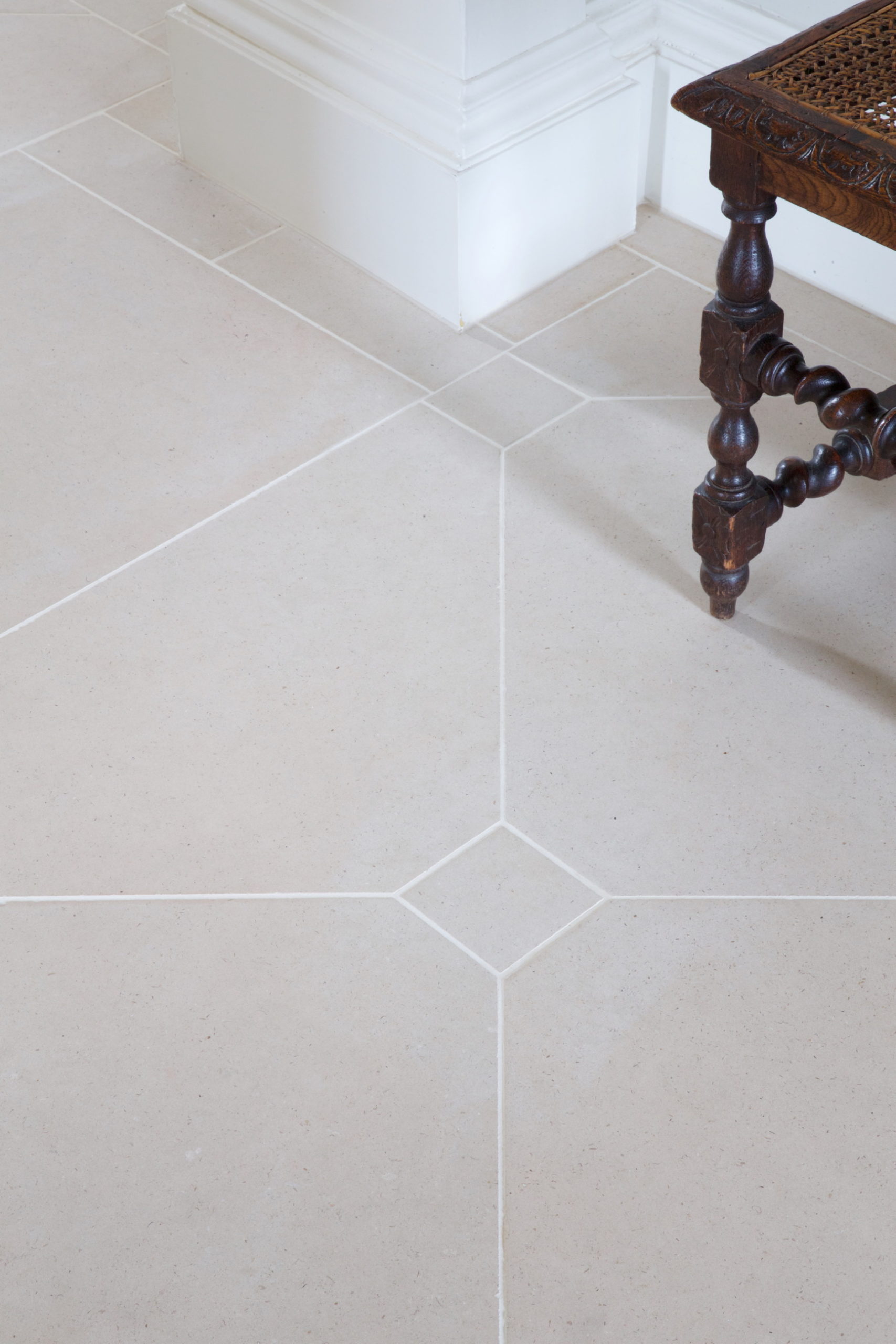
Limestone with matching cabochon from Artorius Faber
Three most important factors when choosing a limestone floor
At Etons of Bath, we have myriad of specialist suppliers and trades that we work on flooring for our Georgian restoration projects. One such supplier is Artorius Faber who we recently worked with on a large Georgian rectory in Nottinghamshire. Edward Smith, the director at the company advises: “The most important factors to consider when choosing a limestone floor, particularly for a Georgian property, are the stone, finish and format. All three of these need to be viewed as a whole to ensure the finished result works in harmony with the property and looks in keeping with the style and period.”
In the Georgian period, these stone floors often incorporated black cabochon, as seen in the photograph of the Georgian entrance hall below. Cabochon stone type often varies from area to area, in and around Bath you find a lot of Lias, other areas of the country Snowdonian Slate. Although, in this particular property the floor was original, there are some amazing suppliers that can faithfully replicate the real deal. They have machinery and techniques that hone the stone and add chips and dents to give it a truly aged feel. Some of these images are of new stone and some are original, Georgian. Can you tell which is which?
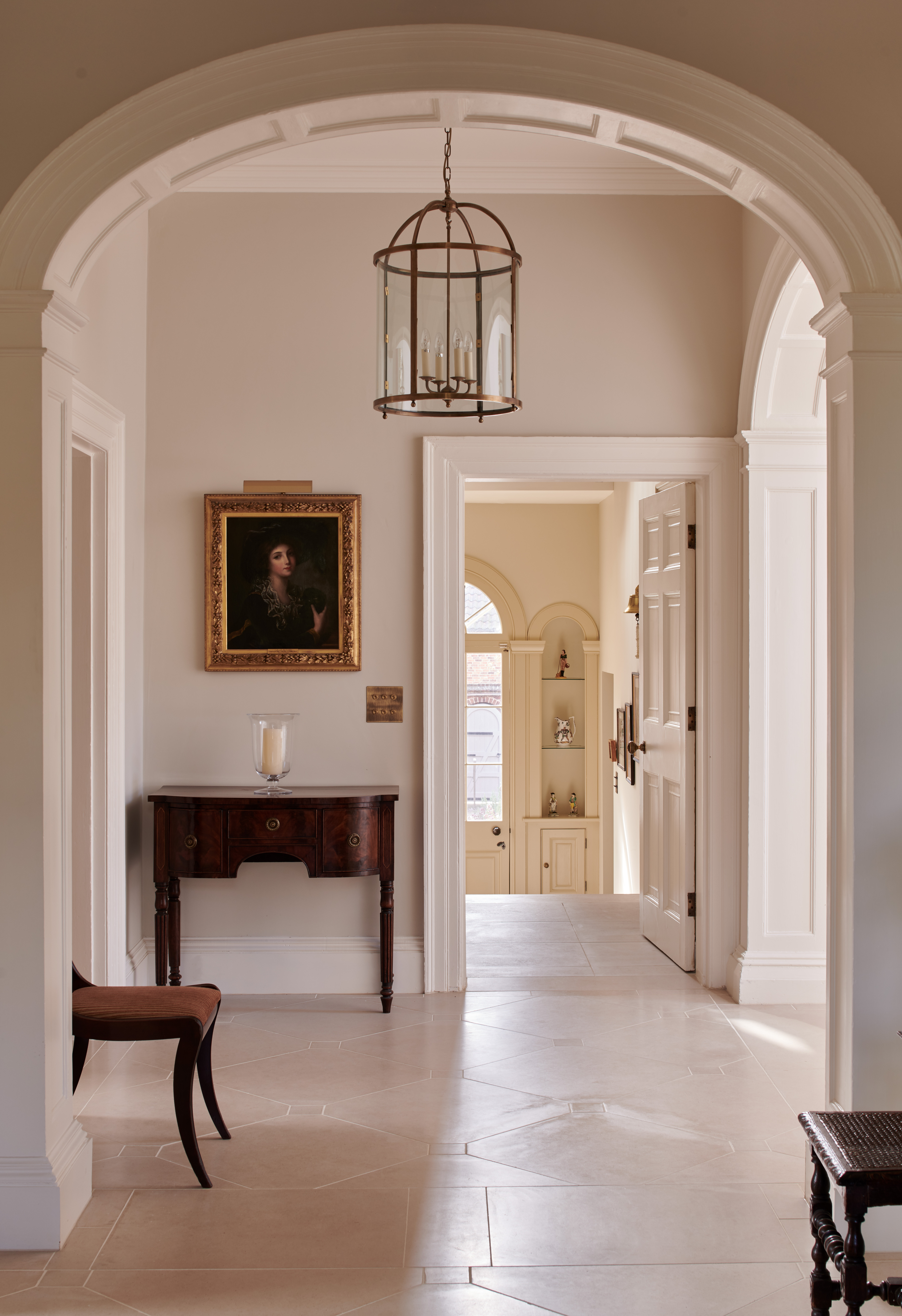
Georgian stone flooring in hallway
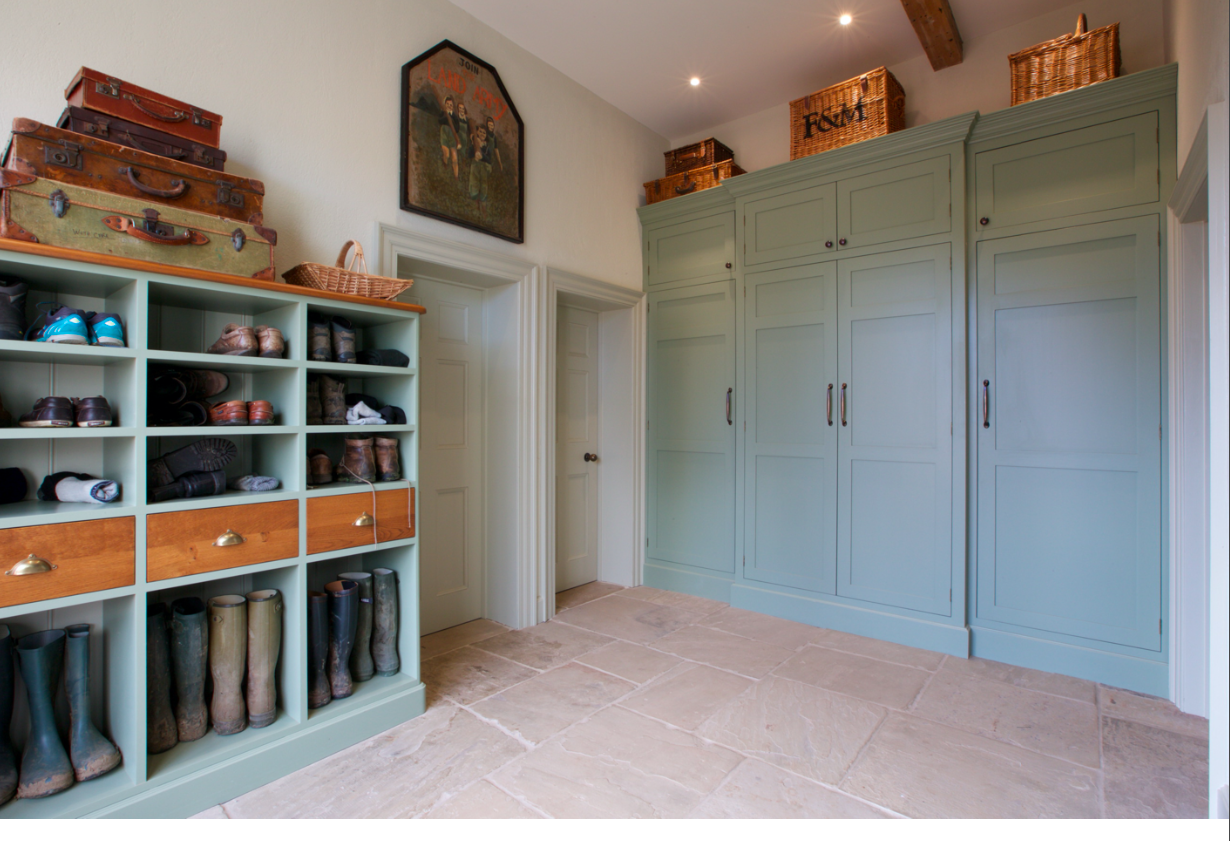
Georgian stone flooring in boot room
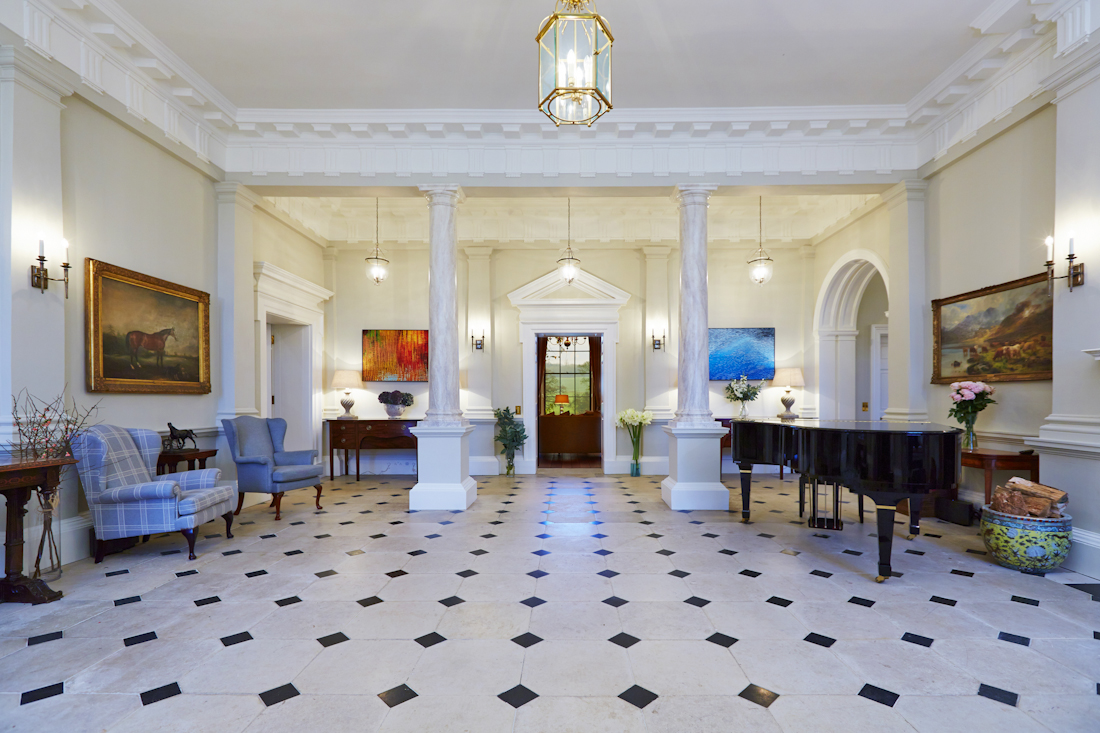
Entrance Hall with contrasting black cabochon
For more information or help with your Georgian interior design, flooringmor renovation, please contact Etons of Bath on 01225 639002




Sorry, the comment form is closed at this time.